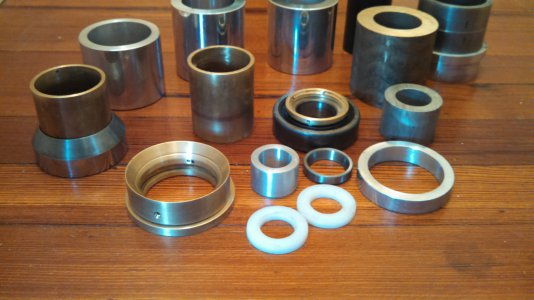- Joined
- Jul 20, 2014
- Messages
- 1,386
CadillacSTS was kind enough to make some aluminum tubes for me to press on/off my Jacobs drill chucks.
The photo shows my collection of various tubes in aluminum, steel and brass with some delrin rings that sit on the
nose face to protect it. All non marring. Thank you Cadillac STS. The guys at work provided some of the other rings and tubes.
The photo shows my collection of various tubes in aluminum, steel and brass with some delrin rings that sit on the
nose face to protect it. All non marring. Thank you Cadillac STS. The guys at work provided some of the other rings and tubes.


